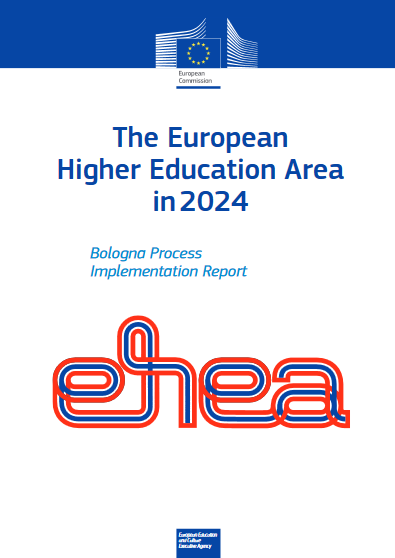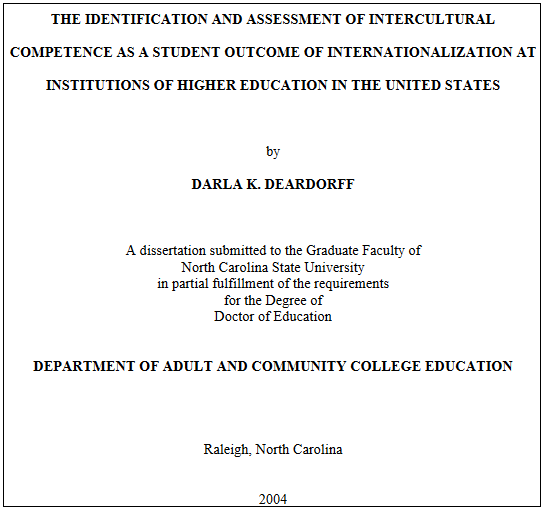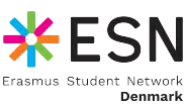In today’s globalized era, student mobility has emerged as a crucial driver for sustainable development, positioning itself as a key for achieving the SDGs. This phenomenon drives cultural and academic exchange between nations and plays a fundamental role in the comprehensive training of individuals and in their preparation for an increasingly globalized labour market.
From exchange programs to international joint degree initiatives, student mobility encompasses various modalities that encourage the acquisition of soft skills, self-confidence and personal competence that enrich individual perspective and strengthen capacities to face the intercultural and global challenges of the 21st century.
Student mobility refers to the movement of students from one educational institution to another, either within their own country or, more commonly, internationally. It is crucial to explore how student mobility aligns with the SDGs, specifically Goal 4: Quality Education, Goal 8: Decent Work and Economic Growth, and Goal 17: Partnerships to achieve the goals (UNESCO 2018).
Worldwide statistics reflect a significant increase in student mobility in recent decades. According to the UNESCO Institute for Statistics, the number of international students has grown from 2 million in 2000 to 5.3 million in 2017 (OECD 2020. Education at a Glance). Indicators and this figure is expected to continue rising (European Parliament 2021. Report on Student Mobility in the European Union). This growth is due in part to globalization and recognition of the importance of gaining an international perspective in higher education.
Impact on personal and professional development
According to a study by the European Commission, 92% of Erasmus+ students reported a significant improvement in their intercultural competences after their experience abroad.
Adaptability is one of the most important skills developed during a period of study abroad. Students must adapt to new environments, educational systems and cultures, allowing them to become more flexible and resilient individuals. This ability to adapt to new situations and solve problems effectively is highly valued in the global labour market and is essential to meet the challenges of the modern world.
Intercultural communication is another key benefit of student mobility. Living and studying in a foreign country exposes students to different ways of thinking and living, broadening their cultural perspective and understanding. A report from the Organization for Economic Cooperation and Development (OECD) highlights that students who participate in international mobility programs are more likely to develop a global mindset and show greater empathy towards other cultures.
Organizations that facilitate student mobility, such as the Erasmus Student Network, play a crucial role in this process. ESN operates in more than 40 countries supporting students during their exchanges and encouraging projects that promote the SDGs, especially those related to quality education. Through initiatives such as “Erasmus in Schools”, ESN also contributes to inclusion and cultural awareness in local communities, aligning with SDG 4 and SDG 17. Programs such as “Buddy System” and “Erasmus in Schools” allow international students to connect with their local peers, promoting integration, inclusion and diversity while fostering greater intercultural understanding and cooperation. This not only enriches the personal experience of students, but also contributes to SDG 17: Partnerships to achieve the goals.
There are numerous concrete examples of how student mobility has benefited young professionals. Take the case of María López, a Spanish engineer who participated in an Erasmus exchange in Germany. She improved her language skills in German and English, but also gained practical experience working on a joint research project between her home university and a German company. This international experience allowed her to access a position in a multinational company based in Madrid, where she quickly rose to a leadership position thanks to her intercultural skills and her previous experience abroad. Another example is Ahmed Khan, a business student from Pakistan who pursued an MBA at a university in Canada. Ahmed completed an internship at a technology company in Toronto, where he applied his academic knowledge in a real professional environment. This experience opened doors to job opportunities demonstrating how student mobility can significantly expand employment and career prospects.
Contribution to SDG 4, 8 and 17
Student mobility has a direct and significant relationship with several of the SDGs, driving advances in education, employment and global collaboration.
Quality Education
SDG 4 seeks to guarantee inclusive and equitable quality education, promoting learning opportunities for all. Student mobility plays a crucial role in this goal by offering students the opportunity to access diverse and high-quality educational systems. Programs like Erasmus+ allow students to broaden their academic horizons, exposing them to different teaching methodologies and educational environments. According to data from the European Commission, Erasmus+ students show a higher rate of study completion and better academic preparation compared to those who do not participate in mobility programs.
Additionally, student mobility encourages educational inclusion by offering scholarships and financial aid to students from different socioeconomic backgrounds, thus promoting equity in access to higher education. These initiatives are aligned with SDG 4.3, which seeks to increase access to quality technical, professional and higher education.
Decent Work and Economic Growth
SDG 8 promotes sustained, inclusive and sustainable economic growth, full and productive employment, and decent work for all. Student mobility contributes to this objective by improving the employability of young people and preparing them for a global labor market. Students who participate in mobility programs develop intercultural and adaptive skills that are highly valued by employers. A report from the Center for International Education (CIE) notes that 64% of employers consider international experience important when hiring new employees.
Partnerships to Achieve the Goals
SDG 17 emphasizes the importance of global partnerships to achieve the Sustainable Development Goals. Student mobility is a clear example of how international cooperation can promote sustainable development. Exchange programs and joint degrees encourage collaboration between educational institutions from different countries, promoting the exchange of knowledge and best practices.
Different Barriers
One of the main obstacles to student mobility are financial barriers. The costs associated with travel, accommodation and subsistence in a foreign country can be prohibitive for many students, especially those from disadvantaged socio-economic backgrounds. Although there are scholarships and financial aid, these do not always cover all expenses. According to a European Parliament report, 37% of students who do not participate in mobility programs cite financial problems as the main reason. It is essential to increase funding and scholarships to support disadvantaged students.
Another significant barrier is the lack of academic recognition. Credits obtained during the period of study abroad are not always recognized by the institutions of origin, which can result in the prolongation of the duration of the studies and the accumulation of additional costs. This lack of recognition can also discourage students from participating in mobility programs.
To overcome this barrier, it is crucial that universities implement more transparent and flexible academic recognition systems. Initiatives such as the European Credit Transfer and Accumulation System (ECTS) have already made progress in this regard, but continued efforts are needed to ensure that credits and qualifications obtained abroad are fully recognized and valued (European Commission, 2019).
Student mobility must be accessible to everyone, regardless of their socioeconomic origin, gender, disability or other personal conditions. To achieve this, inclusive policies are required that promote equity in access to these opportunities.
Conclusion
Student mobility is a powerful tool for personal, professional and global development and through international experiences, students not only acquire academic and professional skills, but also develop intercultural and personal competencies that are essential in an increasingly globalized world. Student mobility directly contributes to several Sustainable Development Goals (SDGs), including SDG 4 (Quality Education), SDG 8 (Decent Work and Economic Growth) and SDG 17 (Partnerships to achieve the goals).
Despite the numerous benefits, there are significant barriers that have yet to be overcome. Financial barriers and lack of academic recognition are challenges that limit many students’ access to these opportunities. It is crucial that governments, educational institutions and international organizations work together to remove these barriers and create an environment that facilitates and promotes student mobility. Increasing funding for scholarships and financial aid, implementing more flexible academic recognition policies, and developing inclusive policies are essential steps toward this goal.
Student mobility is an investment in the future, key tool for sustainable development. By providing students with the tools and experiences necessary to thrive in a global environment, we are fostering a generation of leaders and professionals who will be better equipped to meet the challenges of the 21st century. Promoting and expanding student mobility not only benefits individuals, but also contributes to the sustainable development of our societies.
Andrea Martine Arce is a M.Sc. STUDENT ADVANCED MIGRATION STUDIES, UNIVERSITY OF COPENHAGEN, DDRN INTERN







